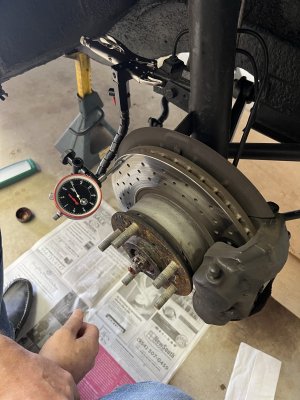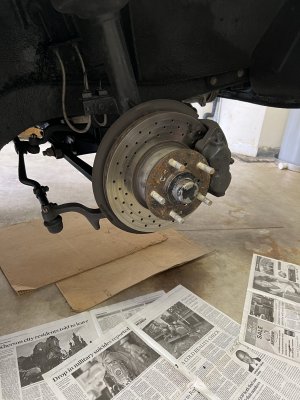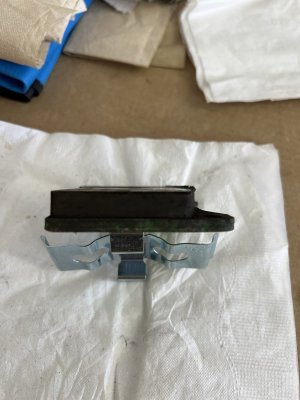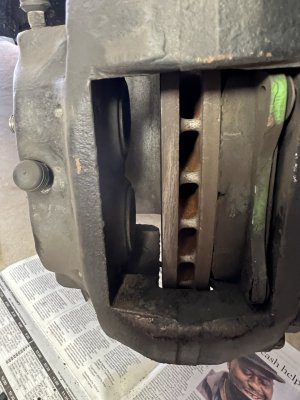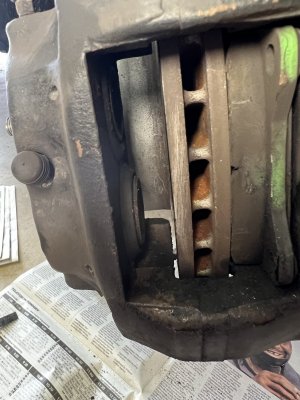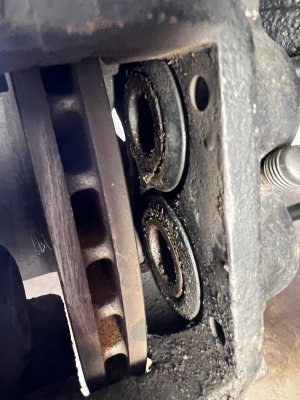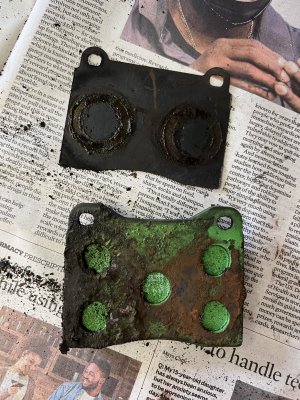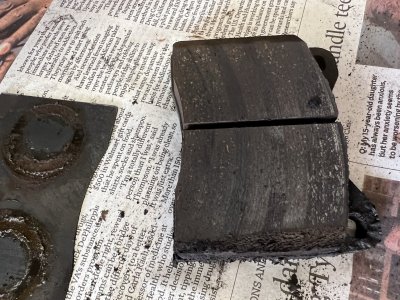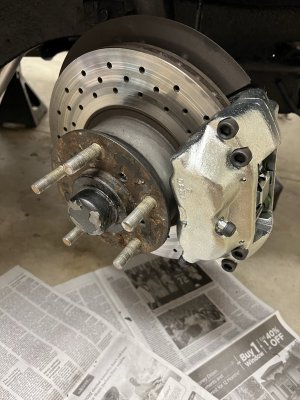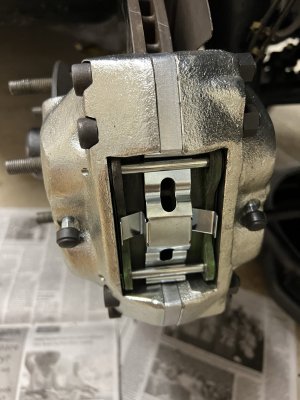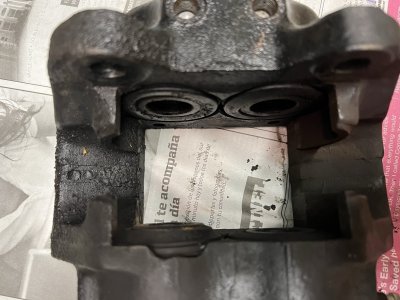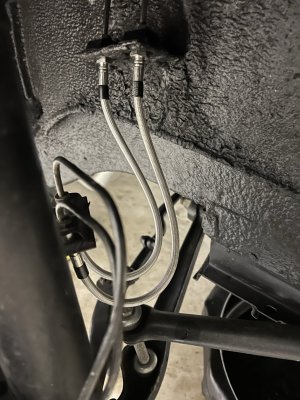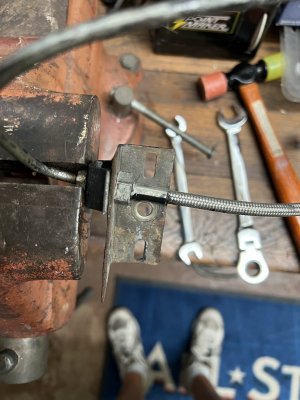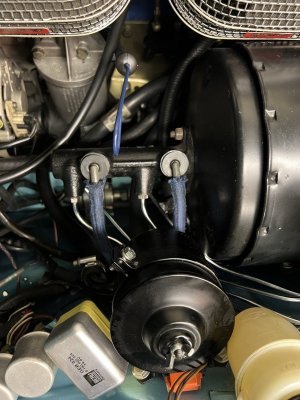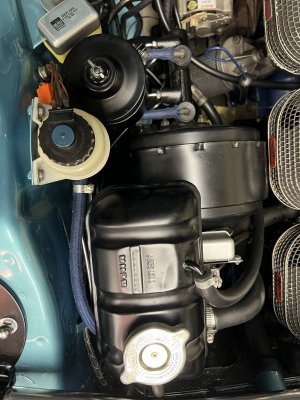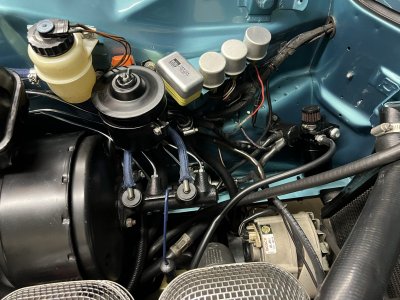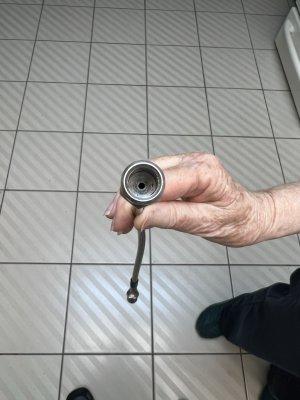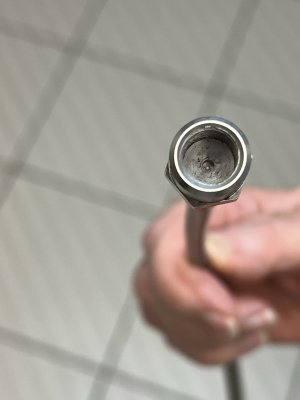Drew: if what "We all know" were true, there would be no problem. But then we would all be wrong. It might have been Performance Brakes who (a fairly long while ago) posted a link to what seemed to me a very authoritative article addressing what actually happens when pads clamp rotors. The gist:
1. There's sliding friction, of course, when the rotor is moving relatively quickly past the brake pads.
2. When you've come to a stop and still have your foot on the brake, there's bonding at the molecular level between pad and disc. When you release the pedal, some of the pad stays stuck to the wheel. This condition can be exacerbated and become depending on driving and braking style.
The accumulation of pad material on the disc results in uneven coefficient of friction in different rotational areas of the disc, and a steering wheel which may transmit that irregularity. The "pulsing" is then (not illogically) interpreted by the driver as a warped disc. Bimmers of a certain age (younger than the E9, E28s and E34s IIRC) were famous for drivers reporting "warped rotors" on the basis of a pulsating pedal. Many a rotor was removed, turned and reinstalled, only to have the problem recur soon after. Essentially, the problem is the manner in which the driver uses the brakes, but I'll extend that it may have to do with pad compound and disc material mechanics.
I think that actually warped rotors (of serviceable thickness, not some of the extraordinarily worn-out rotors I've seen) are pretty unusual and I want to believe that most of us don't drive/brake hard enough to cause rotors to warp, but if you work in a brake shop, well, sick people go to hospitals to die, don't they?
So what's a poor boy to do? Same as has been recommended on this list since decades ago, and nothing to do with a brake lathe. Get the car up to speed, may 60 or 70, and when no one is close behind, make five or six hard stops (don't actually have to come to a full stop, just get 'er down from 60 to 5 mph or so). Get the brakes DA*MN HOT, and the pad will tend to scrape the adhered material off. At the last stop, of course, don't recycle back into step 2 above, and re-deposit pad material on the disc. You may also be informed by this procedure whether your brake fluid is up to par (how much can you smell it?) and whether it should be flushed and replaced. Remember, BMW recommends changing brake fluid every 2 years... who DOES that?
Arde: I never heard of "rough pads" anywhere, but the early (E12 and E28) five series were prone to MASSIVE shimmy even without braking. Ditto my early ('87) E32 735i. The early 6 series inherited the early five series chassis, and the shimmy issues as well. Oh, the bushings I changed on that E32... to no avail what.so.ever. Maybe the problem was that the car had a very hard prior life, and maybe the issue was the metric tires, which I never thought to rotate or get rid of. If you mechanic hasn't heard of the above, he's too young to be working on your car. E28s, E34s and E32s had front lower trailing arm bushing issues aplenty, BTDT, but that's not really a braking problem, more of a design matter when the LCAB has to absorb the full energy of every stop. Small wonder they didn't last longer.

